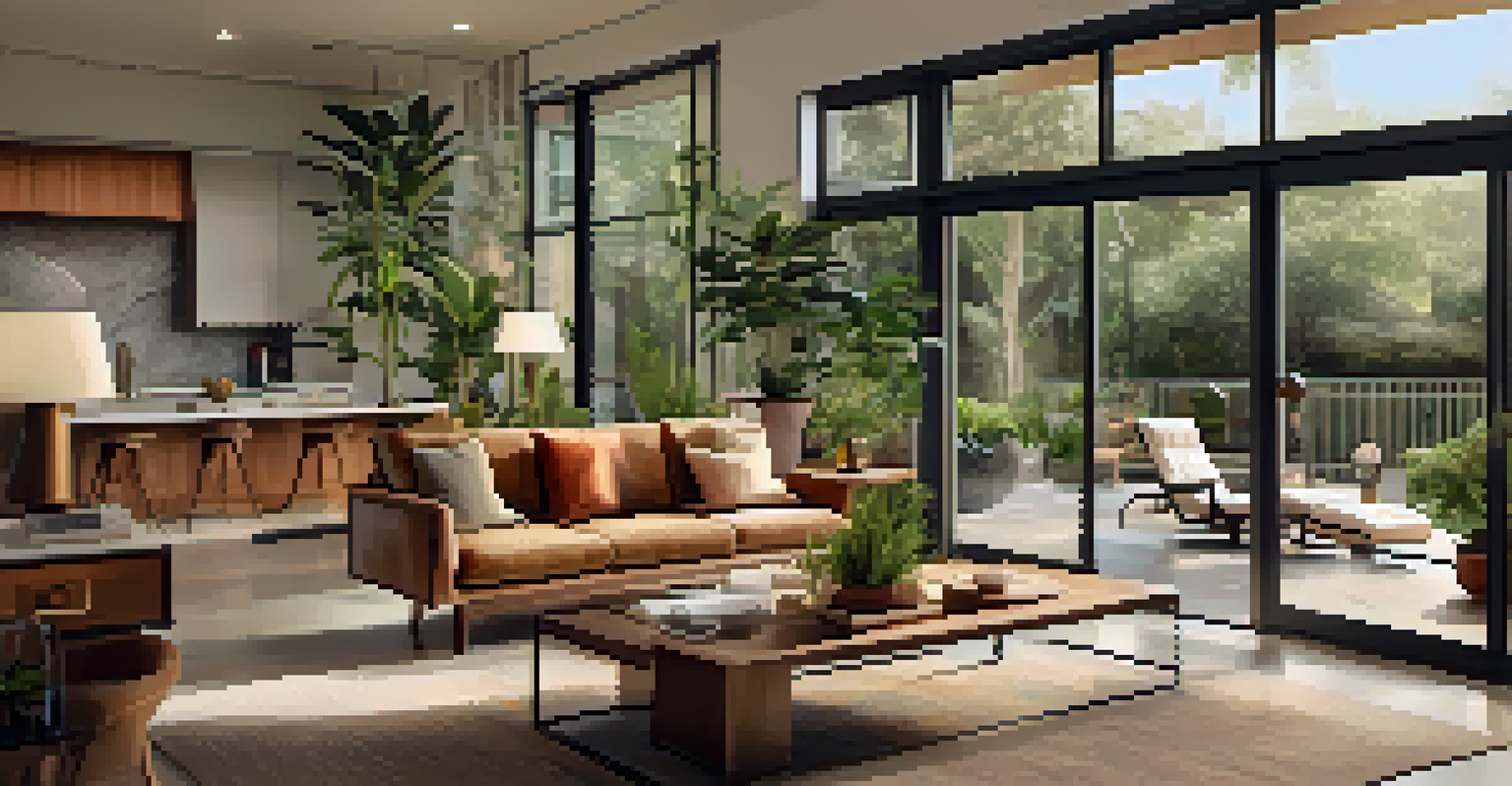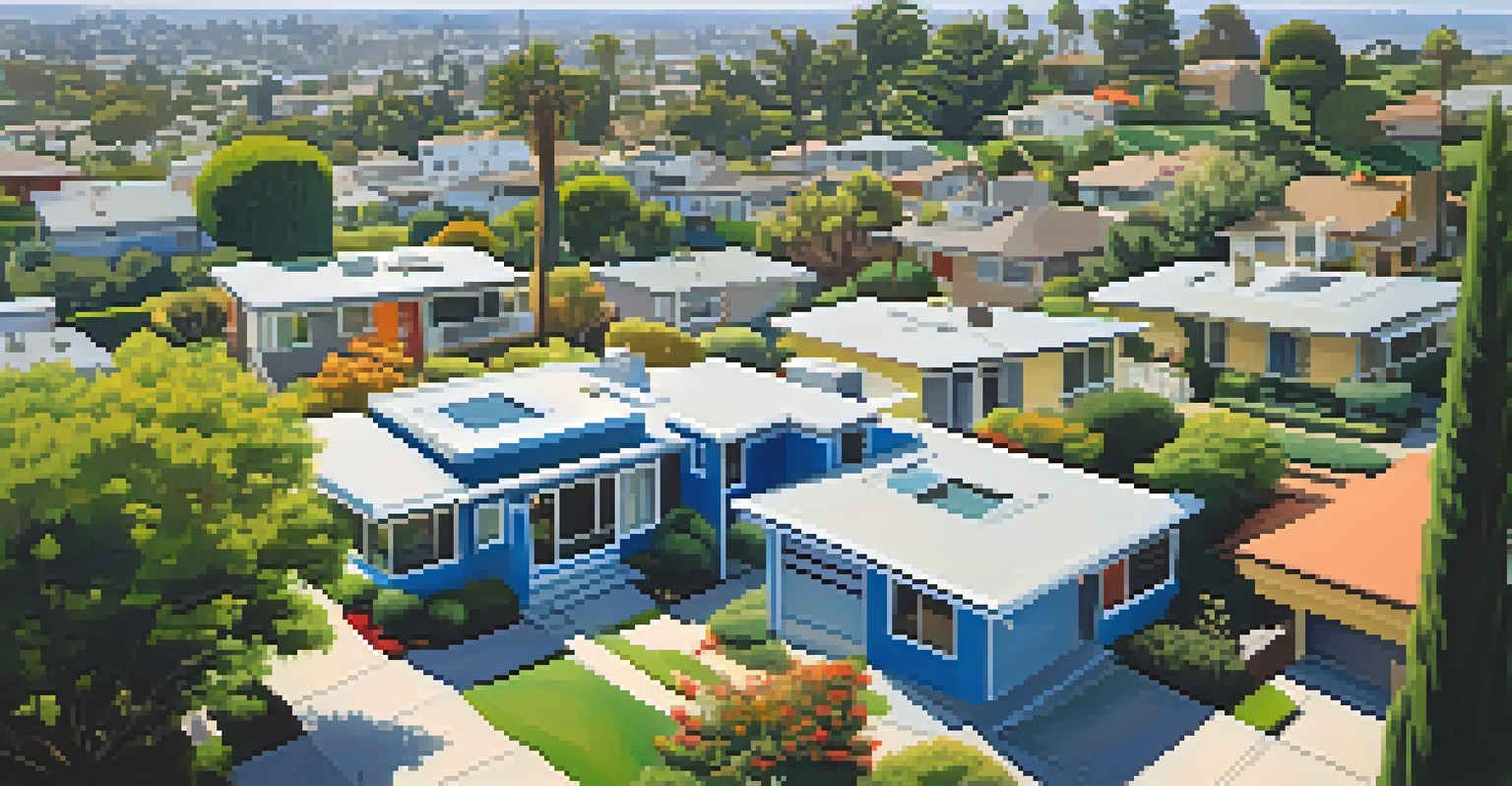Mid-Century Modern: A Timeless Trend in LA Architecture

What is Mid-Century Modern Architecture?
Mid-Century Modern architecture refers to a design movement that flourished from the 1940s to the late 1960s. Characterized by clean lines, organic forms, and a seamless flow between indoor and outdoor spaces, it reflects a post-war optimism. This style emphasizes simplicity and functionality, often utilizing new materials like plywood and steel.
Good design is a lot like clear thinking made visual.
Think of it as a bridge between traditional styles and contemporary design, where form follows function. Iconic examples include homes with large glass windows that invite nature in, allowing for a harmonious relationship with the surroundings. The movement's principles still resonate today, influencing modern architectural practices.
In Los Angeles, Mid-Century Modern isn't just a style; it’s a cultural statement. The homes built during this era have become synonymous with the laid-back California lifestyle, attracting enthusiasts and homeowners alike who appreciate its timeless appeal.
The Roots of Mid-Century Modern in LA
Los Angeles played a pivotal role in the Mid-Century Modern movement, with notable architects like Richard Neutra and Pierre Koenig leading the charge. Their designs frequently showcased the region's stunning landscapes, integrating homes into the hills and canyons. This approach not only highlighted the beauty of California but also reflected a growing desire for a lifestyle that embraced nature.

The post-World War II era saw a housing boom in LA, with many families seeking affordable yet stylish homes. As a result, Mid-Century Modern homes were often constructed with innovative techniques that made them both accessible and desirable. This trend laid the groundwork for the architectural identity of the city.
Mid-Century Modern: A Design Legacy
Mid-Century Modern architecture, emerging in the post-war era, is defined by its clean lines, organic forms, and a seamless connection between indoor and outdoor spaces.
Today, the legacy of these architects is evident in neighborhoods like Palm Springs and the Hollywood Hills, where original homes still stand proudly. These structures are a testament to a time when design was not just about aesthetics but also about creating a sense of belonging and community.
Key Features of Mid-Century Modern Homes
Mid-Century Modern homes are easily recognizable due to their distinctive features. Large, open spaces are a hallmark, promoting a sense of freedom and connection among family members. Additionally, the integration of natural elements, such as wood paneling and stone, adds warmth and character to these spaces.
Simplicity is the ultimate sophistication.
Another defining characteristic is the use of large glass windows and sliding doors, which blur the lines between inside and outside. This design choice not only maximizes natural light but also allows homeowners to appreciate their gardens or views. Imagine hosting a gathering where guests can seamlessly move from the living room to the patio with ease.
Lastly, the furniture and decor that accompany these homes often reflect the same aesthetic principles. Iconic pieces, often made from molded plastic or natural wood, complement the architectural style beautifully, creating a cohesive look that feels both modern and inviting.
Iconic Mid-Century Modern Structures in LA
Los Angeles is home to several iconic Mid-Century Modern structures that have become landmarks in their own right. The Stahl House, designed by Pierre Koenig, is perhaps one of the most photographed examples, with its stunning views of the city framed by floor-to-ceiling glass walls. This house captures the essence of the movement, where architecture meets breathtaking scenery.
Another notable example is the Kaufmann House, which showcases the best of indoor-outdoor living with its expansive terraces and elegant lines. This home represents the pinnacle of luxury and design, attracting admirers from around the world. It's a reminder of how Mid-Century Modern architecture was not just about functionality but also about creating a lifestyle.
LA's Role in Architectural Evolution
Los Angeles became a hub for Mid-Century Modern design, with iconic architects integrating homes into the natural landscape, reflecting a lifestyle that embraces nature.
These structures serve as a source of inspiration for contemporary architects and homeowners alike. They remind us that good design transcends time, continuing to influence and shape our living environments.
The Revival of Mid-Century Modern Design
In recent years, there has been a resurgence of interest in Mid-Century Modern design, both in architecture and interior decor. Homeowners are increasingly drawn to the clean lines and minimalist aesthetics, making it a popular choice for renovations and new builds. This revival speaks to a broader trend of embracing vintage styles while incorporating modern conveniences.
Real estate markets in LA have also seen a spike in demand for Mid-Century Modern homes, often leading to bidding wars. Buyers appreciate the unique character and historical significance these homes offer. This trend is not just about nostalgia; it reflects a desire for sustainable living through the preservation of these architectural gems.
As more people become aware of the value of Mid-Century Modern design, communities are rallying to protect these homes from demolition. Efforts to preserve original architecture highlight the cultural importance of this style, ensuring its legacy for future generations.
Living in a Mid-Century Modern Home
Living in a Mid-Century Modern home is an experience that blends comfort with style. The open floor plans and ample natural light create an inviting atmosphere, perfect for entertaining or simply relaxing. Imagine waking up in a space where every room flows seamlessly into the next, making even small gatherings feel grand.
The design of these homes encourages a lifestyle centered around nature and outdoor living. With patios, gardens, and large windows, residents often find themselves enjoying the beauty of their surroundings. This connection with nature can foster a sense of peace and well-being, which is a reason many choose this style over others.
Revival of Mid-Century Modern Homes
There is a growing interest in Mid-Century Modern design today, leading to increased demand for these homes as they blend vintage charm with modern conveniences.
Moreover, homeowners often find that Mid-Century Modern interiors allow for personalization while maintaining a cohesive look. Whether you prefer bold colors or muted tones, this style offers a versatile backdrop that can reflect your personality while still honoring the original design principles.
The Future of Mid-Century Modern in LA
As we look ahead, the future of Mid-Century Modern architecture in Los Angeles appears bright. With a growing appreciation for sustainable living and historical preservation, many architects are inspired to incorporate these principles into new designs. This fusion of the old and the new ensures that the spirit of Mid-Century Modern continues to thrive.
Innovative technologies are also playing a role in this evolution. Smart home features are being integrated into Mid-Century Modern designs, allowing for modern conveniences without compromising the aesthetic integrity. This blend of technology and design is attracting a new generation of homeowners, eager to embrace the best of both worlds.

Ultimately, the enduring appeal of Mid-Century Modern architecture lies in its ability to adapt while remaining true to its roots. As Los Angeles continues to grow and change, this iconic style will undoubtedly remain a significant part of its architectural landscape, appealing to both new residents and long-time enthusiasts.